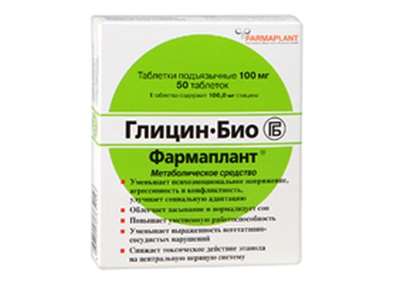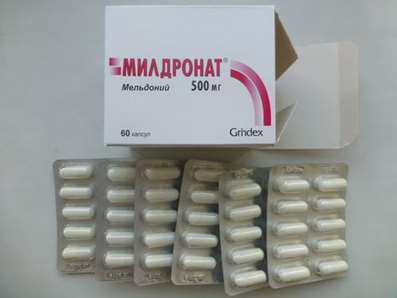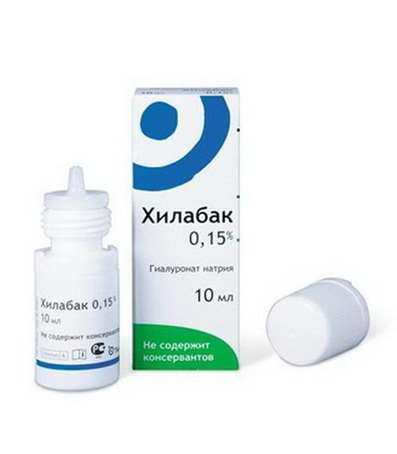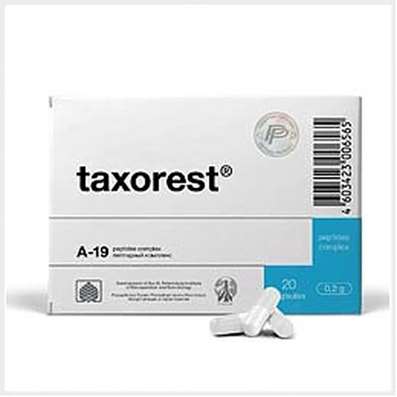Instruction for use: Fimasartan
I want this, give me price
The trade name of Fimasartan: Kanarb, Phimasartan potassium trihydrate
Latin name of substance Fimasartan
Fimasartanum (genus. Fimasartani)
Chemical name
2- [2-Butyl-4-methyl-6-oxo-1 - [[4- [2- (2H-tetrazol-5-yl) phenyl] phenyl] methyl] pyrimidin-5yl] -N, N-dimethylethane ethoamide
Gross formula
C27H31N7OS
Pharmacological group of substance Fimasartan
Angiotensin II receptor antagonists (AT1 subtype)
The nosological classification (ICD-10)
I10 Essential (primary) hypertension: hypertension; Arterial hypertension; Arterial hypertension crisis course; Essential Hypertension; Essential hypertension; Essential hypertension; Essential hypertension; Essential hypertension; Primary hypertension; Arterial hypertension, complications of diabetes; The sudden increase in blood pressure; Hypertensive disorders of blood circulation; hypertensive condition; hypertensive crises; arterial Hypertension; malignant Hypertension; Hypertonic disease; hypertensive crises; accelerated hypertension; malignant hypertension; The aggravation of hypertensive disease; Transient hypertension; Isolated systolic hypertension
I15 Secondary hypertension: Arterial hypertension, complications of diabetes; hypertension; The sudden increase in blood pressure; Hypertensive disorders of blood circulation; hypertensive condition; hypertensive crises; hypertension; arterial Hypertension; malignant Hypertension; hypertensive crises; accelerated hypertension; malignant hypertension; The aggravation of hypertensive disease; Transient hypertension; hypertension; Arterial hypertension; Arterial hypertension crisis course; renovascular hypertension; Hypertension symptomatic; Renal hypertension; Renovascular hypertension; renovascular hypertension; Symptomatic hypertension
CAS code
247257-48-3
Characteristics of the substance Fimasartan
Nonpeptide ARA II (AT1 subtype).
Pharmacology
Pharmacological action - hypotensive, blocking AT1-receptors of angiotensin II.
Pharmacodynamics
Angiotensin II is a key effector compound of RAAS, which plays an important role in the regulation of blood pressure and the pathogenesis of hypertension. Angiotensin II raises blood pressure due to pronounced vasoconstrictive effect and increased OPSS, activation of epinephrine production, release of aldosterone, influence on sodium reabsorption in the distal sections of the renal tubules and an increase in BCC. Its action is carried out through specific angiotensin receptors, with the main physiological effects, including. And adverse, are mediated by AT1 receptors. The effect of fimasartan is due to selective binding to AT1 receptors of angiotensin II, fimasartan does not have a partial agonistic effect on angiotensin II receptors, which is characteristic of peptide blockers of angiotensin II receptors (eg, saralazine). When studying different models on animals, fimasartan after a single or repeated oral and intravenous administration effectively and dose-dependent decreased blood pressure.
In humans, fimasartan increased plasma renin activity in combination with an increase in angiotensin I and II concentrations, which confirms the specific blockade of angiotensin II receptors. Thus, after a single oral administration of fimasartan at a dose of 20 to 480 mg, it caused an increase in plasma renin activity, angiotensin I and angiotensin II, with a maximum increase, usually between 6 and 8 hours after dosing, which lasted for a long time (up to 48 hours after Reception). There were no changes in the activity of ACE and aldosterone associated with fimasartan. Fimasartan increased plasma renin activity and angiotensin II concentrations after repeated use for a 7-day period in a dose of 120 and 360 mg / day. The maximum increase in these parameters was noted, as a rule, 6-8 hours after application and was permanently preserved (up to 24 hours after administration). A decrease in the plasma level of aldosterone was observed with a longer duration of admission of fimasartan (within 28 days). The efficacy of fimasartan in therapeutic doses of 60 and 120 mg in terms of reducing blood pressure was demonstrated in comparative randomized clinical trials. At the same time, it was found that BP with fimasartan is reduced within 2 weeks from the start of treatment, the maximum effect is observed after about 8-12 weeks. Fimasartan is effective for 24 hours, providing a stable and smooth profile of the blood pressure, which is also facilitated by taking fimasartan at the same time of day (to minimize blood pressure fluctuations). When appointing fimasartan for a long period (24 weeks), tolerance did not develop.
Pharmacokinetics
Suction. Fimasartan is rapidly absorbed after oral administration, while Tmax in blood plasma after application in healthy individuals and patients with hypertension was 0.5-3 and 0.5-1.3 hours, respectively. When studying the pharmacokinetic characteristics of fimasartan directly in the population of Russian patients with arterial hypertension, Tmax was also determined in the range from 0.5 to 4 hours (with a single dose of 60 mg).
After reaching Cmax, there was a two-phase decrease in the concentration of fimasartan in the plasma, and the beginning of the elimination phase was observed 2.5-8 h after administration in all patients. Quantifiable concentrations of fimasartan in plasma in the range of 1.33 to 11.2 ng / ml were observed until the last sampling time point 24 hours after administration. The variability of the parameters between patients (geometric mean of the coefficient of variation,%) was high, while the values for AUC0-tlast, AUC0-∞ and Cmax were 50.1; 53.9 and 86.8% respectively.
In the Russian study Ļ——09042014 pharmacokinetics were obtained in female patients. Comparison of data with a population of healthy male volunteers showed that after a single dose of fimasartan in a dose of 60 mg in healthy volunteers, Tmax occurred 2 hours later compared with patients with hypertension. The peak systemic exposure (Cmax) was 1.4 times higher in patients with arterial hypertension. In this case, the total systemic exposure (AUC0-∞ and AUC0-tlast) was comparable in both populations.
A comparison of the data with the Korean population of patients with hypertension showed that after a single dose of fimasartan inside at a dose of 60 mg median Tmax in populations of Russian and Korean patients was approximately 1 hour with an individual range of values from 0.5 to 4 and from 0.5 to 6 H after administration, respectively. The peak systemic exposure (Cmax) and total systemic exposure (AUC0-∞ and AUC0-tlast) of fimasartan are comparable in populations of Russian and Korean patients.
Absolute bioavailability of fimasartan in healthy subjects with oral intake of 60 mg is about 19%.
Distribution and binding to proteins. Pre-clinical studies have shown a limited distribution of fimasartan after oral administration.
When the concentration of fimasartan is 0.01 to 100 μg / ml in vitro, binding to a protein in human blood plasma is 95.6% to 97.2% and is dose independent.
Metabolism. CYP3A4 was the main enzyme that metabolizes fimasartan. At the same time, the role of metabolism in the process of removing fimasartan is insignificant, since the starting material is> 85% of the forms of fimasartan found in the human blood plasma, in addition, the level of systemic exposure to fimsartan is slightly increased by specific inhibitors of CYP3A4. Desulfophimazartan and fimasartan-S-oxide were identified as the most common circulating metabolites of fimasartan in plasma in healthy men. Fimasartan is not an inducer or inhibitor of other enzymes of the cytochrome P450 family.
Excretion. After a single admission of fimasartan in a dose of 20 to 480 mg in healthy T1 / 2 subjects is from 5 to 16 hours, in the Korean population of patients with essential hypertension when doses of 20 to 180 mg of T1 / 2 were administered within 7 to 10 hours , In the population of Russian patients with hypertension - from 4.4 to 7.9 hours with a single dose of 60 mg. The systemic effect is evaluated as linear in a wide range of doses. The accumulation index ranged from 1.2 to 1.26 in healthy individuals and from 1.02 to 1.08 in persons with arterial hypertension. In the evaluation of healthy men and patients with hypertension for 24 or 144 hours after oral administration in urine, approximately 3-5% of the administered dose of fimasartan was detected. Thus, the involvement of the kidney in the excretion of fimasartan is insignificant. The main way of excretion is with feces. Thus, after oral administration of a single dose of 120 mg of radiolabeled 14C fimasartan in a group of 6 healthy men, the average total excretion of radioactivity with feces and urine was about 86% of the prescribed dose, with urinary excretion of about 4.6%.
Special patient groups
Elderly age. In elderly patients (ie, over the age of 65 years), systemic exposure to fimasartan is 1.69 times more pronounced than in young people. However, the increase in systemic exposure in elderly patients, apparently, does not lead to a more significant decrease in blood pressure, The activity of RAAS in this group of patients is usually lower than in young people.
Renal insufficiency. Pharmacokinetic parameters of fimasartan were studied in patients with renal insufficiency, patients on hemodialysis were excluded from the study. When taken in a dose of 120 mg with severe renal dysfunction (calculated GFR <30 mL / min / 1.73 m2), the Cmax and AUC values were compared with those of healthy volunteers: Cmax and AUC in patients with renal insufficiency increased in 1.87 and 1 , 73 times, respectively. When assessing the safety profile, there were no differences in the two groups. For patients with severe renal failure (Cl creatinine <30 mL / min), dose adjustment is required (see "Restrictions on Use").
Liver failure. Fimasartan at a dose of 120 mg was given to patients with hepatic insufficiency (class A and B on the Child-Pugh scale). Cmax and AUC were compared with the same indices in healthy volunteers. The geometric mean ratios of Cmax and AUC were 0.77 and 1.1, respectively, when calculating indices for patients with hepatic insufficiency of class A and healthy volunteers. When calculating indices in groups of patients with hepatic insufficiency of class B and healthy volunteers, 6.55 for Cmax and 5.2 for AUC. There were no significant differences in blood pressure and the safety profile between the three groups. For patients with mild liver failure, no initial dose adjustment is required. In patients with moderate to severe hepatic insufficiency, fimasartan is not recommended (see "Contraindications" and "Restrictions on Use").
Application of the substance Fimasartan
Arterial hypertension of the 1 st and 2 nd degree.
Contraindications
Hypersensitivity; Patients on hemodialysis (no experience in this population); Moderate and severe liver function disorders (more than 7 on the Child-Pugh scale); Obstruction of the biliary tract; Simultaneous use with aliskiren and drugs containing aliskiren in patients with diabetes mellitus and / or moderate or severe renal dysfunction (GFR <60 mL / min / 1.73 m2); Patients with diabetic nephropathy who take ACE inhibitors (see "Interaction"); pregnancy; lactation; Women planning pregnancy (see "Application in pregnancy and lactation"); Age to 18 years.
Restrictions
Special precautions should be taken when using fimasartan in patients with the following conditions / conditions:
- decreased circulating fluid volume or salt depletion - in these patients (eg, patients receiving high doses of diuretics) with activated RAAS, symptomatic arterial hypotension may occur at the onset of fimasartan therapy or with increasing doses. Such patients need careful monitoring;
- renal failure - in patients with increased sensitivity to inhibition of RAAS, changes in kidney function may occur. The use of ACE inhibitors or ARA II may be accompanied by the development of oliguria, progressive uraemia and, in rare cases, acute renal failure or death in patients with renal function dependent on RAAS activity (eg, patients with chronic heart failure, NYHA functional class IV);
- Renovascular hypertension - in patients with unilateral or bilateral stenosis of the renal artery, there is an increased risk of developing severe arterial hypotension or kidney failure when taking drugs that affect RAAS, such as fimasartan (see "Precautions");
- as in the case of the use of other vasodilators, special care must be taken when treating patients with stenosis of the aortic or mitral valve, obstructive or hypertrophic cardiomyopathy;
- primary hyperaldosteronism - the use of drugs that inhibit the renin-angiotensin system, as a rule, is ineffective. Therefore, appointing fimasartan to such patients is not recommended;
- Hyperkalemia;
- simultaneous use of lithium preparations;
- cardiac ischemia;
- cerebrovascular disease;
- elderly age.
Application of pregnancy and breastfeeding
The use of fimasartan during pregnancy is contraindicated.
Drugs that have a direct effect on RAAS, can cause disease and death of the fetus and newborn in the case of therapy of a pregnant woman. The use of drugs that have a direct effect on RAAS in the second and third trimesters of pregnancy has been associated with adverse effects on the fetus and the newborn, including the development of hypotension, neonatal hypoplasia of the skull bones, anuria, reversible and irreversible renal failure and death. Also described was malnutrition, presumably as a result of impaired fetal kidney function. The malignancy was associated with the development of limb contractures in the fetus, deformation of the bones of the facial skull and lung hypoplasia. In addition, there were cases of prematurity, intrauterine growth retardation of the fetus and an open ductus arteriosus, although it is not clear whether these disorders were caused by exposure to drugs.
The use of fimasartan is contraindicated in women planning pregnancy. In case of pregnancy, fimasartan should be canceled as soon as possible. Such undesirable phenomena do not appear to be the result of intrauterine exposure limited to the first trimester. You should inform the woman who receives ARA II during the first trimester of pregnancy. Nevertheless, when a pregnancy occurs, the physician should abolish fimasartan as soon as possible. Newborns exposed to intrauterine exposure to ARA II should be closely monitored for hypotension, oliguria, and hyperkalemia.
It is not known whether fimasartan is excreted in women's breast milk, but it has been revealed that fimasartan is excreted with the milk of lactating rats. Therefore, lactating mothers are not recommended to use fimasartan. It is necessary to decide whether to stop breastfeeding or to cancel fimasartan, given the importance of therapy for the mother.
Side effects of the substance Fimasartan
The safety of fimasartan in the Korean population was studied in 406 of the 852 patients with essential hypertension who received it at a dose of 60 to 120 mg for 4-12 weeks and were included in the clinical studies and selected for safety analysis (i.e., information on Which was the database of security). 85 patients received fimasartan for 6 months or more. The majority of these adverse events were mild to moderate and of a transient nature, the incidence rate was independent of the dose. The most common adverse events were headache and dizziness. The following undesirable reactions (ie, undesirable events regarded as definitely related, probably related or possibly associated with the use of fimasartan), according to the classification of adverse reactions at WHO incidence, recorded in clinical trials using fimasartan in Korea. The incidence was estimated as follows: very often (≥1 / 10); Often (≥1 / 100, <1/10); Infrequently (≥1 / 1000, <1/100); Rarely (≥1 / 10000, <1/1000); Very rarely (<1/10000); Frequency of occurrence is unknown (cannot be determined from available information).
From the nervous system: often - headache, dizziness; Infrequently, fainting, sedation, migraine.
From the digestive tract: infrequently - dyspepsia, nausea, vomiting, pain in the upper abdomen.
From the respiratory system, chest and mediastinum: infrequently - cough.
From the musculoskeletal system and connective tissue: infrequently - muscle twitching, muscle stiffness.
From the skin and subcutaneous tissues: infrequently - skin itching, localized urticaria.
From the side of the vessels: infrequently - hot flashes, hyperemia.
From the genitals and the breast: infrequently - erectile dysfunction.
General disorders and disorders at the site of administration: infrequently - asthenia, sensation of foreign body.
Laboratory and instrumental data (deviations of laboratory indicators): infrequently - increased activity of ALT, AST, thrombocytopenia, increased activity of CK in the blood.
In the Russian population, the safety of fimasartan was studied in 89 of 179 patients with arterial hypertension I-II degrees who received it at a dose of 60 to 120 mg for 12 weeks in a study using lozaratan as a comparator. In this study, the following undesirable reactions associated with the use of fimasartan were observed: nausea in 4 patients (4.5%), increased ACT activity in 1 patient (1.1%), increased ALT activity in 1 patient (1.1%), dizziness 1 patient (1.1%), headache in 4 patients (4.5%), skin itching in 1 patient (1.1%). In the Russian patient population, undesirable phenomena have been identified, the relationship of which with the administration of fimasartan is not established (anemia, diarrhea, an increase in the total cholesterol and LDL-C in the blood, a decrease in Cl creatinine).
Interaction
Potassium-sparing diuretics and drugs containing potassium. With the simultaneous use of fimasartan, as well as other drugs that affect RAAS, and potassium-sparing diuretics (eg spironolactone), potassium-containing supplements, salt substitutes that contain potassium and drugs that can increase serum potassium levels (eg heparin), it is possible Increase serum potassium levels.
Reduction of blood pressure when taking fimasartan can be strengthened with simultaneous use with other antihypertensive drugs, including diuretics. With the previous use of high doses of diuretics, the onset of fimasartan may be accompanied by an excessive decrease in blood pressure due to a decrease in the intravascular volume of the circulating fluid (see "Limitations to use").
Drugs containing lithium. Reversible increase of serum lithium concentration and toxic manifestations were noted with the appointment of lithium with ACE inhibitors. In the case of combined use of lithium-containing drugs with APA II, such reactions were very rare. Although simultaneous use of fimasartan with lithium-containing drugs is usually not recommended, if necessary, such therapy should carefully monitor the level of lithium in the blood.
NSAIDs. With the simultaneous use of NSAIDs (eg, COX-2 inhibitors, acetylsalicylic acid at a dose> 3 g / day) with APA II, the hypotensive effect may be weakened. Against the background of the use of ARA II in combination with a COX inhibitor, in some patients with renal insufficiency (for example, in patients with dehydration and elderly patients with impaired renal function), the severity of impaired excretory function (including the development of acute renal failure, although reversible) was noted. Therefore, care must be taken when using fimasartan with NSAIDs, especially in elderly patients. In these cases, sufficient hydration and careful monitoring of kidney function is necessary.
Hydrochlorothiazide. With the simultaneous use of fimasartan and hydrochlorothiazide, no significant pharmacokinetic drug interaction was observed.
Amlodipine. With the simultaneous use of fimasartan and amlodipine, significant pharmacokinetic drug interaction was not observed.
Ketoconazole. The level of systemic exposure to fimasartan, determined by AUC, against the background of concomitant use of ketoconazole increased approximately 2-fold. Caution should be exercised while using fimasartan and ketoconazole.
Rifampicin or other inhibitors of protein-carriers of organic anions (OATP1B1, OAT1). Phimasartan is not a substrate for the ABC protein transfer system, but is a substrate for OAT1 and OATP1B1 carriers. With simultaneous use of fimasartan with rifampicin (inhibitor of OATP1B1), an increase in the AUC of fimasartan was approximately 4.6-fold. Therefore, the simultaneous use of fimasartan with rifampicin is not recommended. When combined with other inhibitors of the OATP1B1 vector (eg, cyclosporine), there may also be an increase in systemic exposure to fimasartan, so these combinations should be administered with caution.
Warfarin. Simultaneous use of fimasartan did not significantly affect the pharmacokinetics and pharmacodynamics of warfarin.
Atorvastatin. Simultaneous use of fimasartan did not affect the AUC of atorvastatin and its active metabolites. The cmax of atorvastatin and its active metabolites in plasma increased 1.9 and 2.5 times, respectively. There is no data on the clinical significance of this interaction.
Digoxin. Simultaneous use of fimasartan did not affect the pharmacokinetics and clearance of digoxin, except for an increase in Cmax digoxin by 30%. Combined therapy may require careful monitoring of digoxin concentrations.
Other ARA, ACE inhibitors or aliskiren. Double blockade of the renin-angiotensin system by angiotensin II and ACE receptor blockers or aliskiren is accompanied by a higher risk of arterial hypotension, fainting, hyperkalemia and renal function changes (including acute renal failure) than in the case of monotherapy. As a rule, joint use of inhibitors of the renin-angiotensin system should be avoided. Do not simultaneously use aliskiren and fimasartan in patients with diabetes mellitus or renal dysfunction (GFR <60 mL / min / 1,732). It is not recommended to simultaneously use ACE inhibitors and fimasartan, and in patients with diabetic nephropathy simultaneous use of ACE inhibitors and fimasartan should be avoided (see "Contraindications").
Other cases of drug interaction. Fimasartan does not inhibit or induce the enzymes of the CYP450 system.
Overdose
There is no evidence of an overdose of fimasartan in humans. The most likely manifestations of an overdose may be arterial hypotension and tachycardia. Bradycardia can arise as a consequence of stimulation of the parasympathetic nervous system (vagus nerve). In case of symptomatic arterial hypotension, supportive therapy is necessary. It is not known whether fhimasartan is excreted from the plasma by hemodialysis.
Routes of administration
Inside.
Precautions for the substance Fimasartan
Arterial hypotension and disturbance of water-electrolyte balance. In patients with decreased circulating fluid volume or salt exhaustion (for example, those receiving high doses of diuretics, observing a diet with limited salt intake, patients with diarrhea or vomiting), symptomatic hypotension may occur, especially if fimasartan is started or when the dose is increased. Reduction of intravascular volume of circulating fluid or salt depletion should be corrected before the initiation of therapy with fimasartan, or it is necessary to start therapy with a lower dose and then increase it. This requires careful monitoring of the patients' condition.
If symptomatic arterial hypotension occurs, the patient should be placed in a horizontal position and, if necessary, begin infusion therapy. Admission of fimasartan can be resumed after stabilization of blood pressure.
Hyperkalemia. Drugs that affect RAAS can cause hyperkalemia in patients with CHF or renal insufficiency. In the case of fimsartan in these patients, regular monitoring of blood potassium levels is recommended.
Renovascular hypertension. In patients with unilateral or bilateral reninvascular hypertension, there have been cases of increased levels of creatinine and urea nitrogen in the serum against the background of APA II, such as fimasartan. Although fimasartan itself has not been used in patients with unilateral or bilateral renin-vascular hypertension, similar effects may occur in such an application.
Double inhibition of RAAS. When taking drugs that inhibit RAAS, especially when they are used simultaneously with drugs, which can also affect RAAS, it is possible to change the function of the kidneys, including the development of acute renal failure in patients with increased sensitivity to these drugs. Therefore, double inhibition of RAAS, i.e. The simultaneous use of ARA II and an ACE inhibitor is usually not recommended. However, if necessary, such therapy can be performed in a number of patients after confirmation of its safety.
On the background of fimasartan therapy, transient symptomatic arterial hypotension may occur (eg shock, loss of consciousness, dyspnea). When these symptoms appear, you should cancel fimasartan and begin the necessary symptomatic therapy.
Arterial hypotension may also develop in patients receiving ARA II, during anesthesia (anesthesia) and surgical interventions by inhibiting RAAS. In very rare cases, severe arterial hypotension may occur, requiring infusion therapy and the use of vasopressors.
As with other antihypertensive drugs, a marked decrease in blood pressure in patients with ischemic heart disease or cerebral ischemia may worsen the course of the underlying disease. When treating this patient population, special care must be taken.
There is no experience of using fimasartan in patients after kidney transplantation.
In patients of the Negroid race, there is a decrease in antihypertensive efficacy of ARA II.
Influence on the ability to drive vehicles, work with mechanisms. The effect of fimasartan on the ability to drive vehicles and work with mechanisms has not been studied. However, sometimes with the use of antihypertensive drugs, drowsiness and dizziness may occur, therefore patients receiving fimasartan should be warned about the existence of such a risk.

 Cart
Cart





